The 1000 Chinese Indigenous Pig Genomes Project provides insights into the genomic architecture of pigs
- PMID: 39578420
- PMCID: PMC11584710
- DOI: 10.1038/s41467-024-54471-z
The 1000 Chinese Indigenous Pig Genomes Project provides insights into the genomic architecture of pigs
Abstract
Pigs play a central role in human livelihoods in China, but a lack of systematic large-scale whole-genome sequencing of Chinese domestic pigs has hindered genetic studies. Here, we present the 1000 Chinese Indigenous Pig Genomes Project sequencing dataset, comprising 1011 indigenous individuals from 50 pig populations covering approximately two-thirds of China's administrative divisions. Based on the deep sequencing (~25.95×) of these pigs, we identify 63.62 million genomic variants, and provide a population-specific reference panel to improve the imputation performance of Chinese domestic pig populations. Using a combination of methods, we detect an ancient admixture event related to a human immigration climax in the 13th century, which may have contributed to the formation of southeast-central Chinese pig populations. Analyzing the haplotypes of the Y chromosome shows that the indigenous populations residing around the Taihu Lake Basin exhibit a unique haplotype. Furthermore, we find a 13 kb region in the THSD7A gene that may relate to high-altitude adaptation, and a 0.47 Mb region on chromosome 7 that is significantly associated with body size traits. These results highlight the value of our genomic resource in facilitating genomic architecture and complex traits studies in pigs.
© 2024. The Author(s).
Conflict of interest statement
Competing interests: The authors declare no competing interests.
Figures
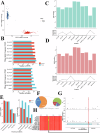
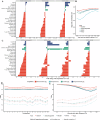
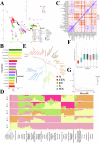
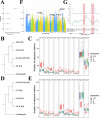
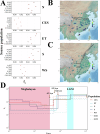

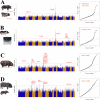
Similar articles
-
Whole genome sequence analysis reveals genetic structure and X-chromosome haplotype structure in indigenous Chinese pigs.Sci Rep. 2020 Jun 10;10(1):9433. doi: 10.1038/s41598-020-66061-2. Sci Rep. 2020. PMID: 32523001 Free PMC article.
-
Human-Mediated Admixture and Selection Shape the Diversity on the Modern Swine (Sus scrofa) Y Chromosomes.Mol Biol Evol. 2021 Oct 27;38(11):5051-5065. doi: 10.1093/molbev/msab230. Mol Biol Evol. 2021. PMID: 34343337 Free PMC article.
-
Introgression of pigs in Taihu Lake region possibly contributed to the improvement of fertility in Danish Large White pigs.BMC Genomics. 2023 Dec 4;24(1):733. doi: 10.1186/s12864-023-09860-x. BMC Genomics. 2023. PMID: 38049711 Free PMC article.
-
Genome-wide genetic variation discovery in Chinese Taihu pig breeds using next generation sequencing.Anim Genet. 2017 Feb;48(1):38-47. doi: 10.1111/age.12465. Epub 2016 Jul 27. Anim Genet. 2017. PMID: 27461929 Free PMC article.
-
Assembly of novel sequences for Chinese domestic pigs reveals new genes and regulatory variants providing new insights into their diversity.Genomics. 2024 Mar;116(2):110782. doi: 10.1016/j.ygeno.2024.110782. Epub 2024 Jan 3. Genomics. 2024. PMID: 38176574 Review.
Cited by
-
Chromosome-Level Genome Assembly of the Meishan Pig and Insights into Its Domestication Mechanisms.Animals (Basel). 2025 Feb 19;15(4):603. doi: 10.3390/ani15040603. Animals (Basel). 2025. PMID: 40003085 Free PMC article.
-
Genomic Analysis of Reproductive Trait Divergence in Duroc and Yorkshire Pigs: A Comparison of Mixed Models and Selective Sweep Detection.Vet Sci. 2025 Jul 11;12(7):657. doi: 10.3390/vetsci12070657. Vet Sci. 2025. PMID: 40711316 Free PMC article.
-
Genomic evidence of the blood virome and bacteriome provides insights into prevalence, evolution, and susceptibility-related genes across Eurasian pigs.BMC Genomics. 2025 Apr 29;26(1):413. doi: 10.1186/s12864-025-11623-9. BMC Genomics. 2025. PMID: 40301733 Free PMC article.
-
Mining of candidate genes related to body size in Chinese native pig breeds based on public data.Sci Rep. 2025 Mar 21;15(1):9793. doi: 10.1038/s41598-025-88583-3. Sci Rep. 2025. PMID: 40118904 Free PMC article.
-
A high-throughput screening method for selecting feature SNPs to evaluate breed diversity and infer ancestry.Genome Res. 2025 Aug 1;35(8):1875-1886. doi: 10.1101/gr.280176.124. Genome Res. 2025. PMID: 40664476 Free PMC article.
References
-
- Frantz, L. et al. The evolution of Suidae. Annu. Rev. Anim. Biosci.4, 61–85 (2016). - PubMed
Publication types
MeSH terms
Associated data
Grants and funding
LinkOut - more resources
Full Text Sources
Miscellaneous

